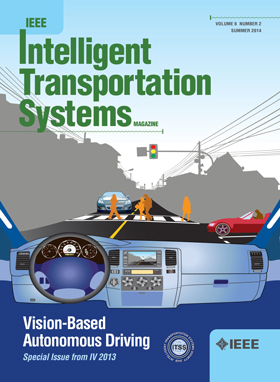Personalized Off-Road Path Planning Based on Internal and External Characteristics for Obstacle Avoidance
IF 7.9
1区 工程技术
Q1 ENGINEERING, CIVIL
IEEE Transactions on Intelligent Transportation Systems
Pub Date : 2024-12-11
DOI:10.1109/TITS.2024.3508841
引用次数: 0
Abstract
Off-road environments with varied terrain and obstacle types present substantial challenges to the safe maneuvering of unmanned ground vehicles (UGVs). This study addresses the need for personalized path planning by introducing a multi-source off-road potential field (MOPF) method that quantifies risk and impediments in off-road settings based on internal and external characteristics. Specifically, Vehicle capability boundaries are defined by longitudinal dynamics analysis of the ego-vehicle to prevent instability due to insufficient driving force and limited adhesion conditions. A novel Non-Uniform Safety Margin Expression (NSME) is proposed to adjust the MOPF, allowing it to consider the vehicle’s state to enhance travel efficiency and minimize detours. The MOPF can be adapted according to the characteristics of the ego vehicle, drivers, and cargo. To incorporate driving styles, the Driving Style Probabilistic Roadmap (DSPRM) algorithm is developed, leading to smoother and more personalized paths. Comparative tests demonstrate that our method enables personalized path planning, achieving an average reduction of 10.29% in path length and 30.83% in path slope compared to traditional planning methods, while maintaining a safe distance from obstacles.求助全文
约1分钟内获得全文
求助全文
来源期刊

IEEE Transactions on Intelligent Transportation Systems
工程技术-工程:电子与电气
CiteScore
14.80
自引率
12.90%
发文量
1872
审稿时长
7.5 months
期刊介绍:
The theoretical, experimental and operational aspects of electrical and electronics engineering and information technologies as applied to Intelligent Transportation Systems (ITS). Intelligent Transportation Systems are defined as those systems utilizing synergistic technologies and systems engineering concepts to develop and improve transportation systems of all kinds. The scope of this interdisciplinary activity includes the promotion, consolidation and coordination of ITS technical activities among IEEE entities, and providing a focus for cooperative activities, both internally and externally.
 求助内容:
求助内容: 应助结果提醒方式:
应助结果提醒方式:


